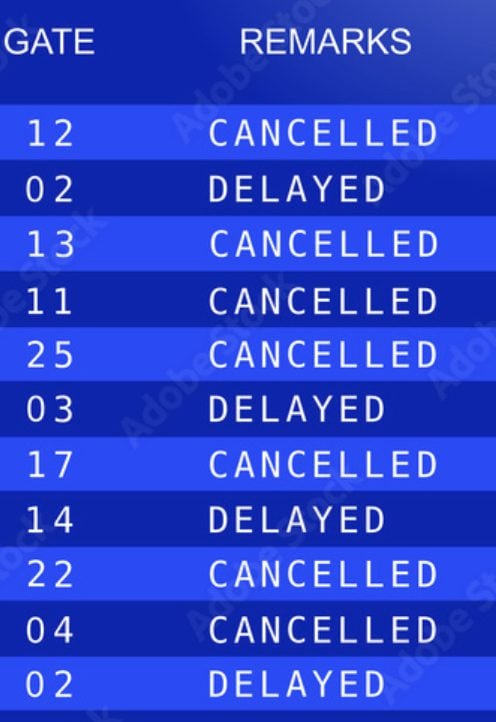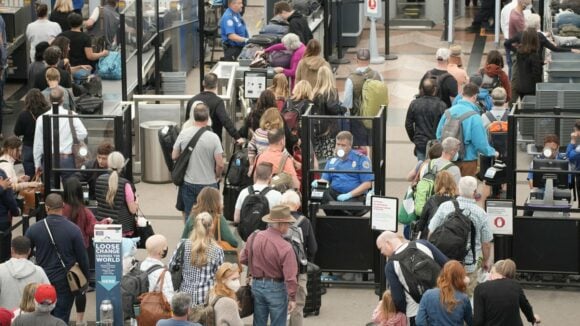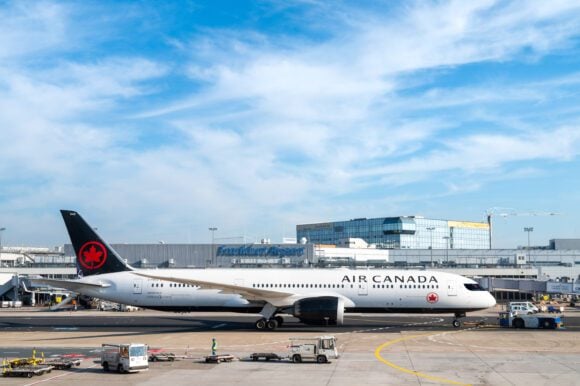
The government shutdown will further impact aviation Friday November 7th, 2025 with the FAA announcing traffic restrictions to be implemented at 40 airports in the US. The FAA plans to seek an initial 10% flight reduction that could grow to 15% if the impacts of the shutdown are exacerbated. That will impact thousands of flights, both in terms of cancellations and delays, as the shortage of air traffic controllers will likely see extensive ground holds in place around the country. If you are flying from, to, or through one of these airports, or a prior flight by your aircraft transits those airports, you may see flight cancellations and delays for your flight.
Through today things haven’t been bad
There are about 25,000 daily flights in the US, on average. Cancelling 2,500 flights tomorrow will be disruptive and impact about a quarter of a million passengers each day. The problem is finding replacement flights for those that are cancelled. With load factors running near 90%, and often heavier as we approach the holidays, it takes about 9 additional flights to re-accommodate all of the passengers from cancelled flights. With typically 2-4 daily flights in a market, that could mean 2-3 days for some passenger to be re-accommodated. Each further flight cancellation simply adds to the long queue of people waiting for seats. There will be horror stories, and both political parties will try and fix blame on the other party.
Through today, flights have been moving, with few cancellations. But tomorrow that could change, dramatically. Of course, TSA employees are also working without pay, like air traffic controllers, that may also result in longer lines and wait times at airports due to absences.
Which airports will be impacted
Airport impacted by the flight restrictions include 24 hub airports utilized by Delta, United, American and Alaska airlines, as follows:
- ATL – Atlanta Hartsfield
- BOS – Boston Logan
- CLT – Charlotte Douglas Intl.
- DCA – Ronald Reagan Washington National
- DEN – Denver Intl.
- DFW – Dallas Ft. Worth Intl.
- DTW – Detroit Metropolitan Wayne County
- EWR – Newark Liberty International
- HNL – Honolulu Intl.
- IAD – Washington Dulles Intl.
- IAH – George Bush Houston Intercontinental
- JFK – New York John F. Kennedy Intl.
- LAX – Los Angeles Intl.
- LGA – New York LaGuardia
- MIA – Miami Intl.
- MSP – Minneapolis St Paul Intl.
- ORD – Chicago O’Hare Intl.
- PDX – Portland Intl.
- PHL – Philadelphia Intl.
- PHX – Phoenix Sky Harbor Intl.
- SAN – San Diego Intl.
- SEA – Seattle Tacoma Intl.
- SFO – San Francisco Intl.
- SLC – Salt Lake City Intl.
These are joined by 4 High Traffic leisure markets
- LAS – Los Vegas Harry Reid Intl.
- MCO – Orlando Intl.
- FLL – Ft. Launderdale Hollywood Intl.
- TPA – Tampa Intl.
And also joined by 4 Southwest Airlines Focus Cities
- DAL – Dallas Love Field
- HOU – Houston Hobby
- BWI – Baltimore Washington Intl.
- MDW- Chicago Midway
as well as 7 Cargo Hubs:
- MEM – Memphis Intl.
- SDF – Louisville Intl.
- ANC – Anchorage Intl.
- CVG – Cincinnati Northern Kentucky Intl.
- IND – Indianapolis Intl.
- OAK – Oakland Intl.
- ONT – Ontario Intl.
and 1 Business Jet focused airport:
- TEB – Teterboro (New Jersey)
What flights will be impacted?
Flights to be impacted will be primarily domestic, as international flights and flights from international carriers will remain scheduled as normal. Flights between domestic hubs are also among the most likely to remain active, as they carrier connecting passengers to other locations. It is most likely that regional flights will be the first to be cut. Of course, with an air traffic controller shortage, it is likely that delays will impact flights extensively, exacerbating cancellations with significant delays.
The first flights in the morning are the most likely to depart and arrive on time, so if you can be on that 6 or 7am flight, it is your best bet for getting to your destination. Airlines are allowing both free rebooking and flight cancellations without fees for passengers that are impacted by the shutdown uncertainty, cancellations, or delays. This is one of the rare circumstances in which passengers can obtain refunds for normally non-refundable fares with most airlines.
While the air traffic control system continues to run safely, staffing levels have been below recommended deadlines for some time, and the potential risk of errors from controller fatigue have grown given longer shifts because of employee absences.
The FAA is measuring performance using data-driven metrics, and will adjust flight reductions up or down based on performance. “The system is extremely safe today and will remain so,” said Bryan Bedford, FAA Admnistrator. “If pressures continue, we’ll take further measures. This plan is prescriptive and targeted — we won’t compromise safety.”
The Bottom Line
At 37 days, the government shutdown has become the longest in US history, with no end in sight given intransigence between the two political parties in Washington. Culling 10% of the flight schedule has a material impact on airlines, and will likely reverse a break-even to slightly positive quarter into a net loss to break-even quarter.
Airlines are a high risk industry, with high fixed costs for aircraft, facilities, and people that relies on consistent revenues streams. When those revenue streams are broken, even with a 10% reduction, the impact on airline bottom lines is disproportionately high. With the Thanksgiving week coming up, and uncertainty creeping in about travel plans, we are seeing some passengers cancelling flights and planning to instead drive to their destinations, or cancelling plans altogether.
Uncertainty is detrimental to airlines, as this is an industry that relies on being on-time and planned. Passengers need certainty as well, and the length of this shutdown has their holiday plans in limbo. While many are holding on and hoping for the best, even a low cancellation rate can have a deleterious impact on airline revenues without a counterbalancing reduction in cost.
There is an old adage that if Con is the opposite of Pro – Congress is the opposite of Progress. Today’s shutdown situation perfectly fits that sentiment. It is time for both parties to put partisanship aside. talk with each other, and get back to work to solve the country’s problems.
Views: 1




